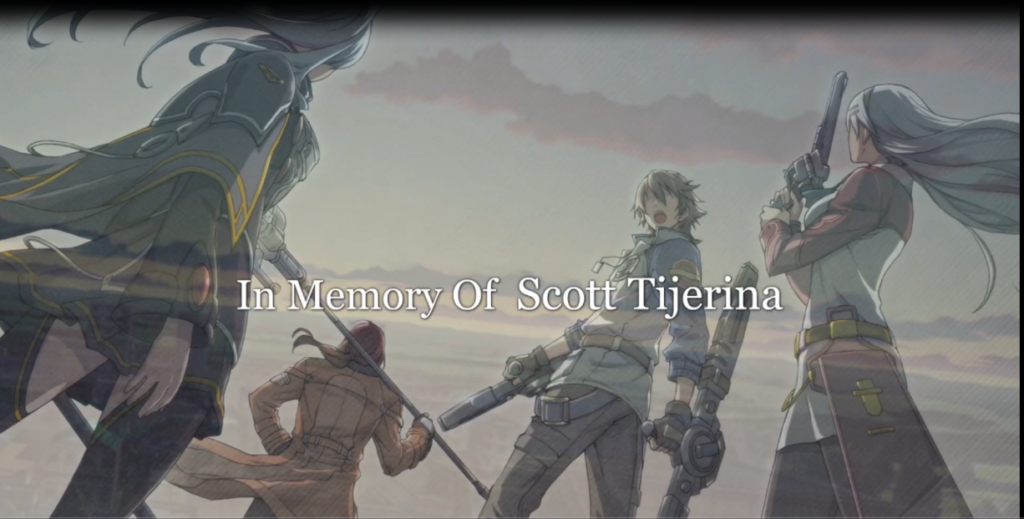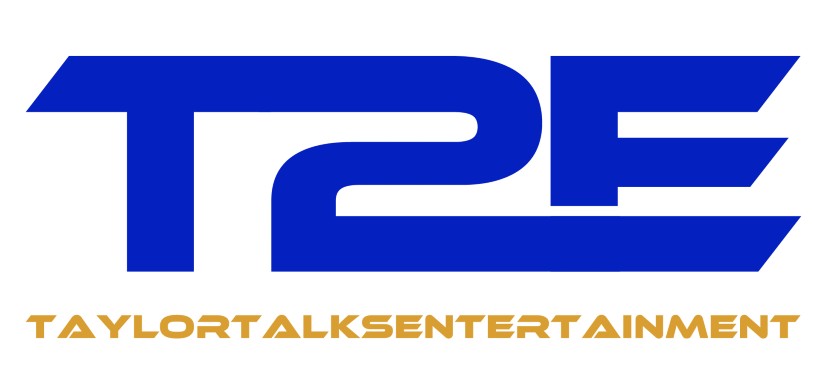This piece has been a long time coming. Despite having had all of the footage needed for this review since May of this year, the script wasn’t coming together for this one no matter how hard I tried. But no longer. Why the apprehension over one video game you may be wondering. Well Trails to Azure is special; it’s a game many thought we would never see the localization of; it’s a game that proved that Kiseki was more than a legend of heroes Gaiden. Trails to Azure is often regarded as one of the best games in the Kiseki series if not the best. Let us dive in! This is The Legend of Heroes: Trails to Azure!

Introduction & Leadup to Release
The story of Azure naturally begins long ago in the land of the rising sun. 2010 saw the release of Zero no Kiseki, which brought Japan domestic audiences the first chapter of the Crossbell saga to receive critical acclaim from audiences and critics alike. Zero’s story in comparison to the other first games of the saga, both past and present, was quite different in the sense that it left things open for a sequel without dangling an unsatisfying cliffhanger in front of players for years. But Zero’s ending raises more questions the more you think about it. Given that there was a three-year gap between the releases of Sora No Kiseki the 3rd and Zero everyone was expecting some form of wait time for the next installment in the franchise. Falcom then surprised everybody by announcing the highly anticipated sequel to Zero, Ao no Kiseki or Trails to Azure as you may know it.
The release initially occurred in 2011 for the PlayStation Portable, followed by its release on Windows PC via the Chinese company Joyoland in 2013. Joyoland was responsible for the original PC releases of Zero, which was then repurposed by Falcom to enhance performance. Falcom did not repeat this process with the release of Ao. Ao itself represented several significant milestones as it was the fifth and final game in the Kiseki series to be developed for the PSP. It was also the final game in the series to be developed in the Yamaneko engine, but not the final game that Falcom developed within the engine. On the localization side of things Azure was the second and final game translated in the joint effort by NISA (Nippon Ichi Software of America) and the Geofront team, a coalition of dedicated passionate fans who not only created an incredible fan translation, who not only brought an honestly borderline archaic port into the modern age with the enhancements it deserves, but also brought the Crossbell duology to the rest of the world.
Ao was a programming marvel for Falcom at the time, so we have to thank Toru Endo, Aichiro Miyata, and Katsuya Horimoto for the work they did here. Art direction was overseen by Katsumi Enami. The narrative team consisted of Hisayoshi Takeiri, Nobuhiro Hioki, and Yoshihiro Konda, whilst the score was composed by Hayato Sonoda, Takahiro Unisuga, Saki Momiyama, and Masanori Osaki. When NIS of America picked up publishing rights the game was distributed for PlayStation 4, Nintendo Switch, and Windows PC and released in March 2023.
Synopsis & Writing
Several months have passed since the cult incident in Crossbell City and the accompanying political shakeups that have resulted. Our story begins with a multi-lateral operation performed by the Crossbell State Police, State Army the Guardian Force, and the Bracer Guild in order to bring the remnants of the cult to justice along with their benefactor. With newly elected officials set to bring reform to Crossbell and the cult incident behind Crossbell City, it looks as if order and security are set to return to Crossbell. And more than that, the state looks as if it will finally move forward, both economically and politically. However, as destiny would have it the trials in Crossbell are just beginning, and that will change the fates of not only the recently seasoned Special Support Section (SSS) but all of Zemuria as well.
Azure is special in the sense that it functions more as a direct sequel rather than the second piece of a story that was awkwardly cut in half. Azure throws you right into the action, which serves to set the tone of the story and connect the events of this game with those of Zero. The connection is made clearly, and we see for ourselves all over Azure the rewards and consequences of our hero’s actions in the previous installment.
Zero struck an excellent balance between its storytelling, worldbuilding, and character arcs. And Azure continues with a host of familiar faces. The Crossbell duology especially stands out from other arcs as it is truly an ensemble cast. Zero introduced us to the primary four members of the SSS in Lloyd, Elie, Tio, and Randy, whilst having characters such as Wazy, Noel, Rixia, and Dudley in supporting roles. Azure sees this support elevated to members of the main cast. Noel and Wazy are made proper members of the SSS as soon as the game starts. As for Rixia and Dudley, they are equally important players in the events of Azure even if they don’t garner as much screentime as the SSS.
These compliments also extend to Kea, the young girl endeared many to her, in-universe and out, for her charm and kindness. But beyond the mystery of her and a couple of character moments she didn’t do much within the context of Zero. She was someone who needed the protection of the SSS, but in Azure she is a lot more of an active character since Kea and the circumstances surrounding her are the driving force of Azure’s narrative. Without her Azure wouldn’t be half of what it is.
Azure also casts a spotlight on characters and character dynamics that weren’t granted much time to shine within its predecessor. For example, Randy. Despite being a core member of the SSS, there wasn’t much time dedicated to exploring the past of the battle-hardened Jaeger in comparison to his compatriots Lloyd, Elie, and Tio. All three of whom had direct clear-cut relations to the main conflict. Randy made up for this through strong character moments, but they hardly pierced the surface of the character’s history. Azure rectifies this wholeheartedly as Randy’s past as a Jaeger comes back to haunt him and all of Crossbell in a very visceral way.
Kiseki as a series had built itself up as an interconnected collection of stories building upon each other and Azure is no exception. The events of Azure are the culmination of seven years of planning, and we will not see a payoff for the events and concepts within the series on this scale for a long, long time. Much of Azure’s marketing put an extreme emphasis on the events of the West Zemuria Trade Conference and for good reason. It introduces us to the many faces we’ll see plenty of in the future and reintroduces us to many more we’ve come to know over the runtime of the series. Not many series dedicate an entire set piece and narrative chapter to a political and economical summit and manage to make it interesting.
Falcom still manages to make a world so interesting that I find myself disappointed when it skimps on details. For example, Azure very much ends in a good place for the characters and the journey they’ve embarked upon, but still leaves me with so many questions as to the state of the world and the concepts introduced. There are many questions of which we still don’t have an answer today. Azure very much opened the box to some very interesting concepts and ideas. And in this universe, the events of Azure were a tipping point in which Zemuria entered the more turbulent era we see presented in later installments.
Kiseki has somewhat of a reputation for being a slow-burn type of series, in which it takes time to build up its stories, and this is mostly true. However, Azure is by no means a slow story. The Crossbell duology has a reputation for concise thematic narratives, and Azure is the culmination of this narrative venture. Every event informs the other and Falcom presents what may be the best-paced story in the series. Its concise nature makes it much more engaging and digestible to casual audiences whilst still having the layers and nuances to keep series fans engaged and entertained. Put simply, Azure’s writing is the culmination of Falcom’s writing acumen at its zenith and represents the very best of the series.
Gameplay
As the fifth game in the Kiseki mini-series, Falcom sought to deliver something familiar but still manages to implement some new concepts. And as fate would have it, many of these additions would go on to be mechanical mainstays in the franchise even today. Combat is still turn-based with characters moving on grids to perform attacks, character skills, (Crafts), and magical abilities (Arts). You still equip various pieces of armor and accessories with magical quartz to enable and enhance magical abilities.

But the main aspect of progression that was implemented in the series for the first time was the addition of Master Quartz. You now have a dedicated slot for Master Quartz. This piece of equipment is special in that it gains experience like you do, and as it grows stronger it will enable you with a special ability. Master Quartz come in several varieties as they are tied to different elements. Some are easy to obtain through finding them in treasure chests or by purchasing them. And some are more involved, requiring you to finish the quest line of side activities such as Pom Pom Party or Fishing. Reaching max level with a Master Quartz will unlock a special ability for player use.
Among the other notable combat additions is the inclusion of the Burst mechanic. During the climax of a chapter you will notice a gauge in combat that increases by attacking your foes and executing team attacks. When the gauge is full you can activate Burst. This lasts only for a few turns but while it’s active your team will receive a number of benefits, such as; no interruptions by enemy turns with the exception of scripted boss moments in select narratively charged boss fights, instantaneous casting of magical arts, steady regeneration of Craft points, which are used for special attacks. These points regenerate during Burst at a value of 10 points per turn. When used tactically Burst can change the entire tide of a battle and skilled players will hold onto a Burst until a critical moment.
In gameplay balance Azure was the end of an era as this was the last game to use elemental values for the sake of building up your Arts and Quarts setups before Sen no Kiseki redefined several aspects of the Kiseki gameplay sandbox. It was also the last game in the franchise to truly offer tactical turn-based gameplay that challenges players in meaningful ways until the likes of Kuro no Kiseki a decade later. Even on normal the game presents a fine challenge that can overwhelm the overconfident. Special compliments to the game’s ultimate challenges, the Steel Maiden, and the Scarlet Ogre, which serve as the player’s ultimate test of the gameplay sandbox. I personally enjoyed every minute of those battles.

With a plethora of side activities with tangible in-game rewards Azure provides a satisfying and rewarding gameplay loop that can be enjoyed by series veterans and newcomers alike. Despite being the fifth game in this formula Falcom still manages to make something incredibly fresh and engaging to play!
Presentation & Score
Kiseki games have often been accused of visual stagnation and I can’t bring myself to disagree, however as the last sprite-based entry in the series I have to praise what works here. The character models themselves don’t emote at all, but the character art of various expressions more than makes up for that, and is an aspect that was handled much better here than it was in Sen no Kiseki 1 & 2.
Crossbell itself has a distinct visual style and atmosphere that is breathtaking despite being limited by graphical limitations. The new models fit quite well and that even extends to the character models that the Ao no Kiseki Kai port added with a glaring exception of course. The game visually and technically shines the brightest when played on PC with its variable graphic options and host of features implemented by the Geofront team initially and Durante’s team PH3 later on. We did lose the sound test from the Geofront release but the musical track label setting I can enable is a close second.


The score is beyond masterful, as the game possesses more than 50 tracks all of which are composed by some of Falcom Sound team’s very best. Hayato Sonoda has been with Falcom since his work on Vantage Masters in 1995 and remains an integral part of Falcom’s iconic sound even today. He composed several backbone tracks through the Crossbell saga such as “Afternoon in Crossbell” and “A New Daily Life.” He may not always be given the powerful rock ballads that others such as Unisuga, Osaki, and Momiyama have, but his sound design is unmistakable and his contributions immeasurable.
Takahiro Unisuga is a very famous name nowadays and Azure’s soundtrack was one of the turning points that showed us the depths of his talent, He came on in 2005 with his debut tracks appearing in 2005’s Xanadu Next. His battle tracks are pure adrenaline, given form such as “Concentrate all Firepower.” But if you’re talking about Unisuga on Azure’s soundtrack you likely have a particular track in mind. He was the mind and instrumentation behind “Azure Arbitrator” the final boss theme. Unisuga would go on to be a household name for Falcom.
Sonoda and Unisuga always have phenomenal output, but the true stars of this score are Saki Momiyama and Masanori Osaki. Both of these composers were notable standouts for the team but are both no longer with the company. Osaki left the company after Zero’s release in 2010, but he had already composed the final tracks he worked on for Falcom here on Azure’s score. He was the mind behind such classics such as “Inevitable Struggle” as well as “Arrival Existence.” His Azure output is honestly even better as he has composed more tracks that have become ingrained into the fanbase’s memory, like the ever popular “Destruction Impulse” that flanks the SSS’ first battle with Shirley.
Momiyama is a composer whom I could spend an entire article talking about. After her debut in 2008’s Zwei 2 she composed a number of tracks for both Ys and Kiseki. She was the composer behind Zero’s main battle theme “Get over the Barrier” as well as standouts in Azure’s score such as “Seize the Truth,” “Mystic Core,” and “Unfathomed Force.” She would go on to be a driving force in the score of Sen 1 as she was the composer behind Sen 1’s main battle theme “Glint of Cold Steel.” Momiyama would unfortunately leave the company after the release of Sen 1. She, however, still creates music today and her work for Falcom remains a treasured gem, be it her contributions to Ys, Zwei, or Kiseki.
When it comes to the breakdown of tracks composed for the game, Momiyama and Osaki composed over half the score together. The pair were a powerful duo and elevated every title they were involved in with excellent compositions and instrumentation. And me and many others are saddened by the fact they are not with the company anymore. However, their work lives on as their work still receives adulation, praise, and new arrangements even today. All these composers together bring the Crossbell saga a very distinct sound that is unlike any other and remains one of the most celebrated in Falcom’s long, long library of compositions.

Conclusion
Trails to Azure is one of those rare games where everything comes together in a way that is very enjoyable and natural. The fact that it took over a decade for this game to officially leave Japan is nothing short of a tragedy. On behalf of everyone who awaited this day, we thank Geofront for your work; without you this day would never have come. True masterpieces are largely unaffected by the passage of time, and Azure is just as fun and engaging today as it was in 2011. I recommend The Legend of Heroes: Trails to Azure to everyone! Special thanks to OmgFloofy of the Geofront team for collaborating on this piece.
Patron Shout-out
Special thanks to our patrons to whom these articles would not be possible without the support of:
Francesco Santoyo





